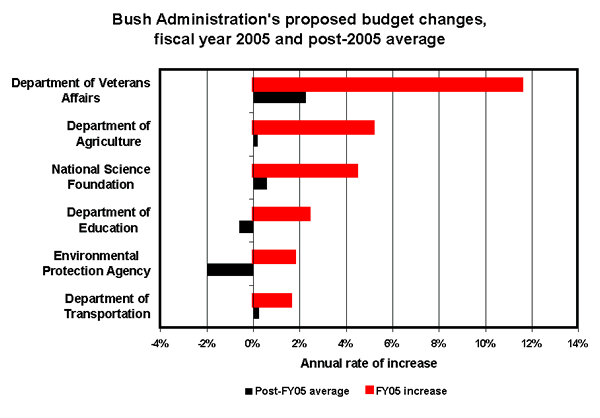See Snapshots Archive.
Snapshot for February 18, 2004.
Bush budget clearly tailored for election year
The centerpiece of the Bush Administration’s fiscal policy is a pledge to cut the budget deficit in half by 2009. To make this a serious possibility, the budget would need a politically unappetizing combination of tax increases and spending cuts. At the same time, election-year politics are driving many of the budget decisions. The result is a pattern in the budget numbers where the appearance of increases is contradicted by the reality of the long-term budget averages. In particular, the administration asks for immediate increases in politically sensitive spending, while at the same time reducing subsequent spending that undercuts its commitments for 2005.

The figure shows selected areas where spending increases proposed by President Bush for the coming fiscal year 2005 are followed by slowdowns or reversals in spending growth. For instance, the Department of Veterans Affairs increases by more than 11% in 2005, but by an annual average of less than 3% from 2006 through 2009. The implied fall in education spending after 2005 is especially troubling in light of the burgeoning cost to the states of implementing the “No Child Left Behind” education guidelines.
The contrast between proposed spending growth in 2005 and the years that follow points to several problems. Under any circumstances, it would make more sense to have a smooth rate of increase in any given area. But even more problematic is that after 2005 the slow rates of increase—and in some cases, decreases—are unrealistic and exaggerate likely budget savings and deficit reduction.
Source: EPI analysis of The Budget of the U.S. Government, FY2005.
This week’s snapshot was written by EPI economist Max B. Sawicky.
